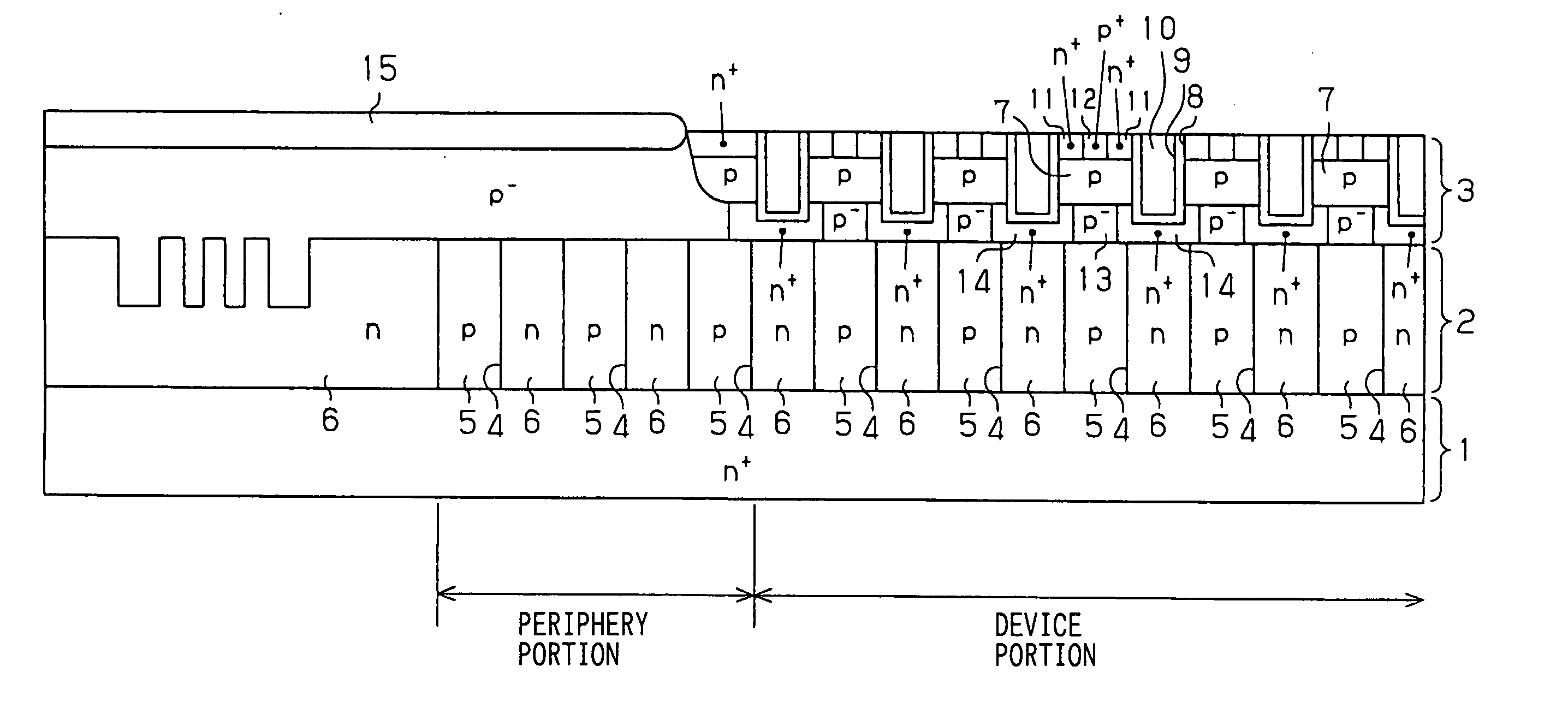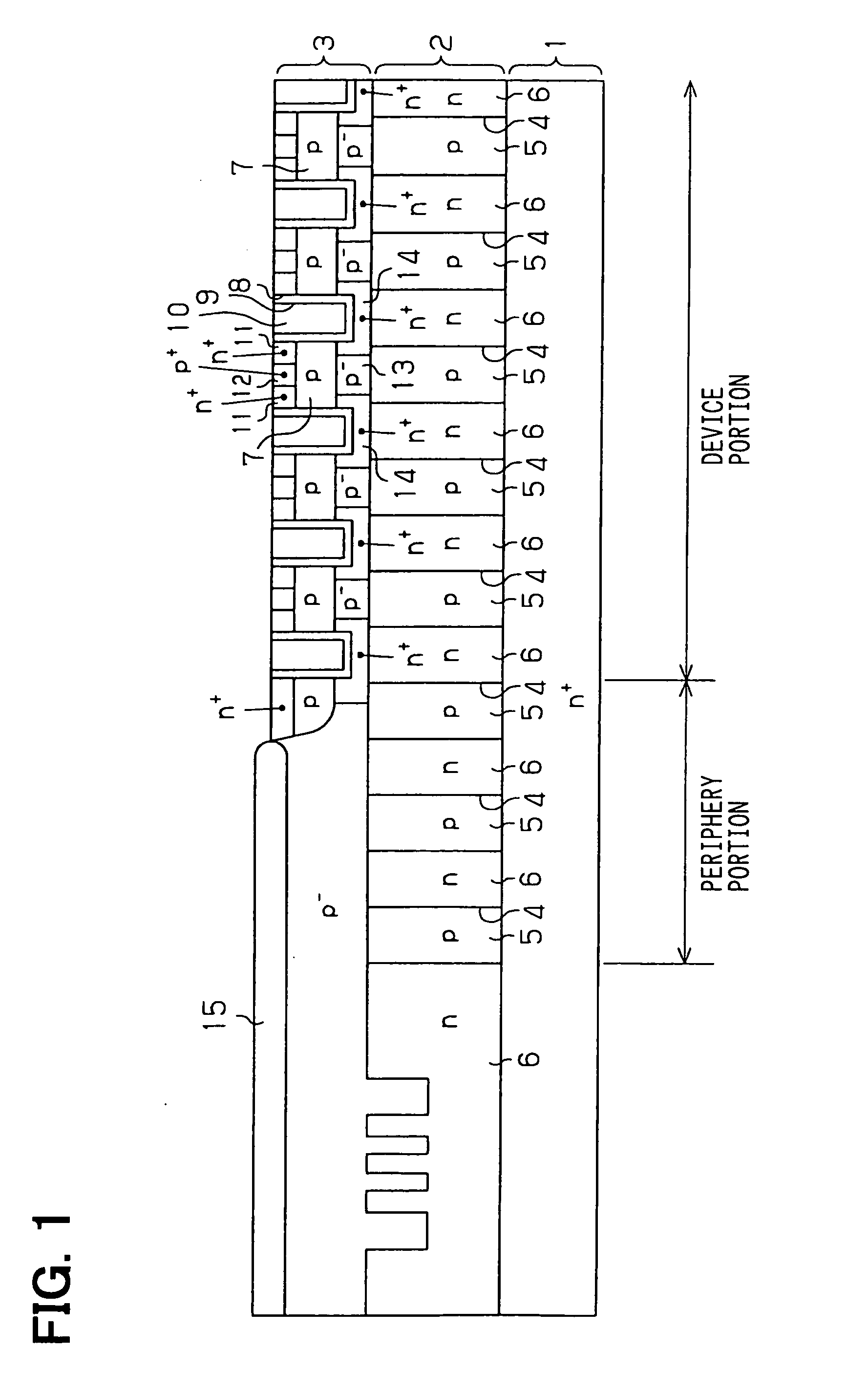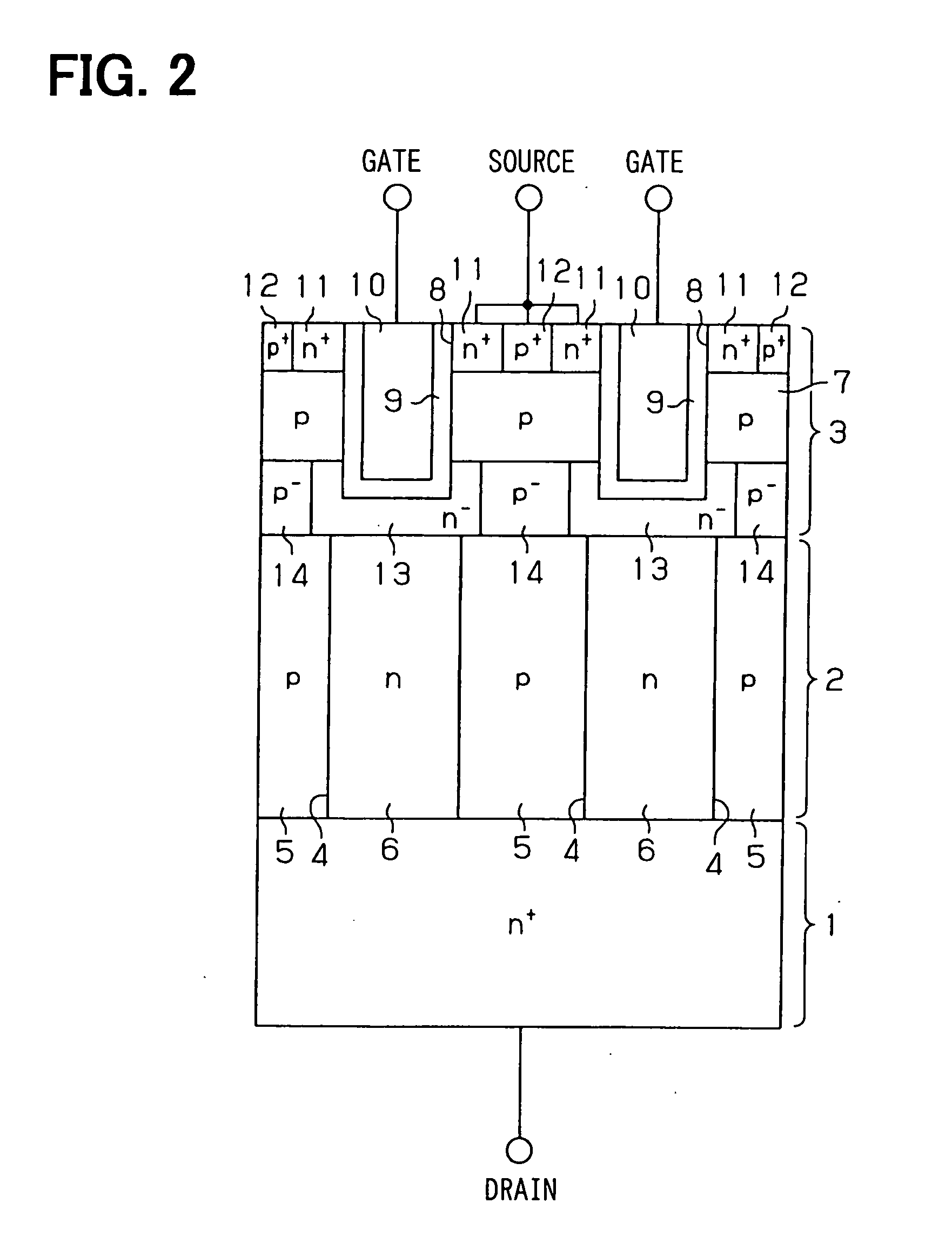Method for manufacturing semiconductor device
a manufacturing method and semiconductor technology, applied in semiconductor devices, heat-resistant fibres, textiles and paper, etc., can solve the problems of reducing device performance and reducing breakdown voltag
- Summary
- Abstract
- Description
- Claims
- Application Information
AI Technical Summary
Benefits of technology
Problems solved by technology
Method used
Image
Examples
first embodiment
[0044] The inventors performed a simulation relating to a breakdown voltage when P-type silicon was filled in the trenches of an N-type silicon substrate to form a diode structure. The results of simulation are shown in FIGS. 27A to 27D. FIGS. 27A and 27B show the substrate having void-less structure, and FIGS. 27C and 27D show the substrate having void structure. FIGS. 27A and 27C show electric potential distributions, and FIGS. 27B and 27D show a distribution of an impact ionization ratio. When a defect (i.e., a void) does not occur in an epitaxial film filled in the trenches, a potential distribution and an impact ionization ratio shown in FIGS. 27A and 27B are obtained and a breakdown voltage of 248 V can be secured. However, when a defect (i.e., a void) 101 occurs in the epitaxial film filled in the trenches 102, as shown in FIGS. 27C and 27D, a breakdown occurs at an upper portion 103 of the void 101, which results in reducing a breakdown voltage to 201 V.
[0045] In this manne...
second embodiment
[0110] Next, the second embodiment will be described with a particular emphasis on the difference between the second embodiment and the first embodiment.
[0111] As shown in FIG. 15A, trenches 51 are formed in the silicon substrate 50. Then, as shown in FIG. 15B, an epitaxial film 52 is formed. Further, as shown in FIG. 15C, the epitaxial film 52 is etched by a halogenide gas, whereby the epitaxial film 52 closing the trench openings is removed. Hydrogen chloride (HCl) is used as the halogenide gas.
[0112] Thereafter, as shown in FIG. 15D, an epitaxial film 53 is again formed, thereby being filled in the trenches 51. At this time, the epitaxial film 53 is formed by epitaxial growth using a mixed gas of a silicon source gas and a halogenide gas (the condition [A] in the first embodiment). Further, the epitaxial film 53 may be grown under additional conditions [B] to [E] in the first embodiment.
[0113] The additional etching of the epitaxial film 52 by hydrogen chloride (HCl) can taper...
third embodiment
[0115] Next, the third embodiment will be described with a particular emphasis on the difference between the third embodiment and the first and second embodiments.
[0116]FIGS. 16A to 16D show a process of manufacturing a semiconductor device with a semiconductor substrate of this embodiment. FIGS. 17A to 17D show the relationship between parameters (processing temperature, the amount of flow of a silicon source gas, the amount of flow a halogenide gas, the amount of flow of a dopant gas) when a process of manufacturing (processing) a semiconductor substrate of this embodiment is continuously performed in an epitaxial film forming apparatus. Here, XVIB in FIGS. 17A to 17D represents a process as a doping epitaxial process without halogenide gas shown in FIG. 16B, XVIC in FIGS. 17A to 17D represents a process as a low concentration epitaxial process with the halogenide gas shown in FIG. 16C, and XVID in FIGS. 17A to 17D represents a process as a thermal diffusion process shown in FIG....
PUM
 Login to View More
Login to View More Abstract
Description
Claims
Application Information
 Login to View More
Login to View More - R&D
- Intellectual Property
- Life Sciences
- Materials
- Tech Scout
- Unparalleled Data Quality
- Higher Quality Content
- 60% Fewer Hallucinations
Browse by: Latest US Patents, China's latest patents, Technical Efficacy Thesaurus, Application Domain, Technology Topic, Popular Technical Reports.
© 2025 PatSnap. All rights reserved.Legal|Privacy policy|Modern Slavery Act Transparency Statement|Sitemap|About US| Contact US: help@patsnap.com



